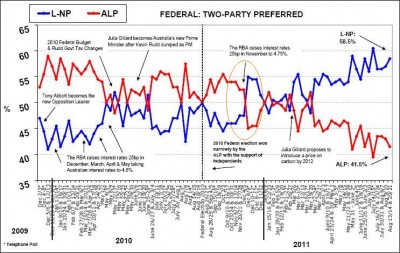If there’s ever a book that you can say is pure geek indulgence, it’s Cryptonomicon. No other book I’ve seen takes the abstract concepts of topics as varied as UNIX, cryptography and normalising preferences between siblings for Grandma’s inheritance through a distribution on a cartesian plane formed in a parking lot. You can tell this isn’t your daddy’s war novel.
Stephenson weaves together two stories, interlinked through blood – in the 1930s, Lawrence Waterhouse, a borderline-Autistic mathematician encounters Alan Turing shortly before World War II is due to break out; Bobby Shaftoe is a U.S. Marine stationed in Asia, retreating from Shanghai ahead of the march of the Japanese through China, while Goto Dengo is Bobby’s counterpart of sorts on the Japanese side, a soldier who dares to think of self-preservation ahead of the Emperor’s wishes.
In the late 90s, Randy Waterhouse is being dragged into a business venture by his friend and former business partner Avi; he ends up working with Amy and her father Douglas Macarthur Shaftoe, son of Bobby. They employ the services of one Goto Engineering, which, yes, is presided over by Goto Dengo himself. All this has the backdrop of the mysterious Societas Eroditorum in the background, with a seemingly ageless preacher by the unlikely name of Enoch Root playing a part in both timelines.
This is all not even mentioning the central push of this novel, which is so loaded with technical details it’ll make your head spin: the Cryptonomicon is all about cryptography, encoding messages for secure transmission. It has actual technical details, an algorithm and even an actual Perl script for encoding and decoding a method of encryption specifically invented for this book. There’s even an appendix dedicated to explaining the method for the audience that didn’t catch on through the novel. I mean, damn!
Although some of the technical aspects can be a bit overbearing in the middle of a novel, and the different voices of the narrators are occasionally jarring – albeit pleasingly distinct – this stands on its own as a thriller without the technical background.
The technical details are more easily understood if you come from a software background, but nevertheless I would suspect this would add greatly to the realism, at least for all those that know precious little about both the code-breaking efforts in WWII and the workings of today’s technology.
Rarely does Stephenson use these elements gratuitously. His writing is dense and yet spare, descriptive without being prescriptive – you can easily imagine these people in your head, but the descriptions aren’t overly specific or belaboured. In some ways, perhaps that does truly identify it as a geek novel: it says enough to get the salient points across, but without being needlessly wordy about it.
Cryptonomicon suffers a little from the same issue many a novel that uses historical characters in its narrative, namely that had the fictional characters actually be interacting with the non-fictional ones in the ways described, the non-fictional novel should be equally if more significant than the ones the actual characters deliver.
Ripping and engaging yarn, hard to put down. ★★★★

